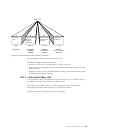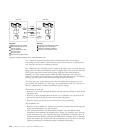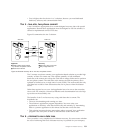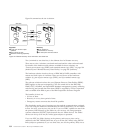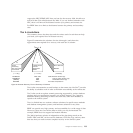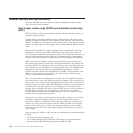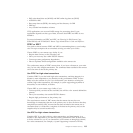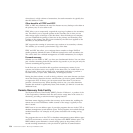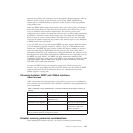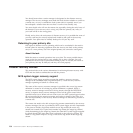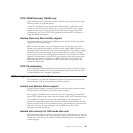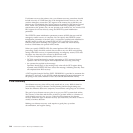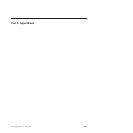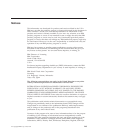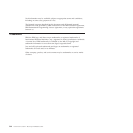
between the primary and secondary sites is interrupted. Remote logging is only as
effective as the currency of the data that is sent off-site. RRDF transports log
stream data to a remote location in real-time, within seconds of the log operation
at the primary site.
When the RRDF address space at the remote site receives the log data, it formats it
into archived log data sets. Once data has been stored at the remote site, you can
use it as needed to meet business requirements. The recovery process uses
standard recovery utilities. For most data formats, first use the log data transmitted
by RRDF in conjunction with a recent image copy of the data sets and databases
that you have to recover. Then perform a forward recovery. If you are using DB2,
you have the option of applying log records to the remote copies of your databases
as RRDF receives the log records.
If you use DB2, you can use the optional RRDF log apply feature. With this feature
you can maintain a logically consistent “shadow” copy of a DB2 database at the
remote site. The RRDF log apply feature updates the shadow database at selected
intervals, using log data transmitted from the primary site. Thus restart time is
shortened because the work needed after a disaster is minimal. The currency of the
data depends on the log data transmitted by RRDF and on how frequently you run
the RRDF log apply feature. The RRDF log apply feature also enhances data
availability, as you have read access to the shadow copy through a remote site DB2
subsystem. RRDF supports DB2 remote logging for all environments, including
TSO, IMS, CICS, batch, and call attach.
At least two RRDF licenses are required to support the remote site recovery
function, one for the primary site and one for the remote site. For details of RRDF
support needed for the CICS Transaction Server, see “Remote Recovery Data
Facility support” on page 239.
Choosing between RRDF and 3990-6 solutions
About this task
Table 3 summarizes the characteristics of the products you can use to implement a
tier 6 solution. You must decide which solution or solutions is most appropriate for
your environment.
Table 3. Selecting a tier 6 implementation. This table compares the strengths of the tier 6
solutions.
RRDF 3990-6
Data type supported Various data sets
1
Any on DASD
Database shadowing Optional. Available for DB2
and IDMS only
Optional
Forward recovery required Yes Depends on implementation
Distance limitation None About 40 km for ESCON.
Unlimited for XRC with
channel extenders
Note:
1
Data sets managed by CICS file control and the DB2, IMS, IDMS, CPCS, ADABAS,
and SuperMICR database management systems.
Disaster recovery personnel considerations
When planning for disaster recovery, you need to consider personnel issues.
Chapter 19. Disaster recovery 237



